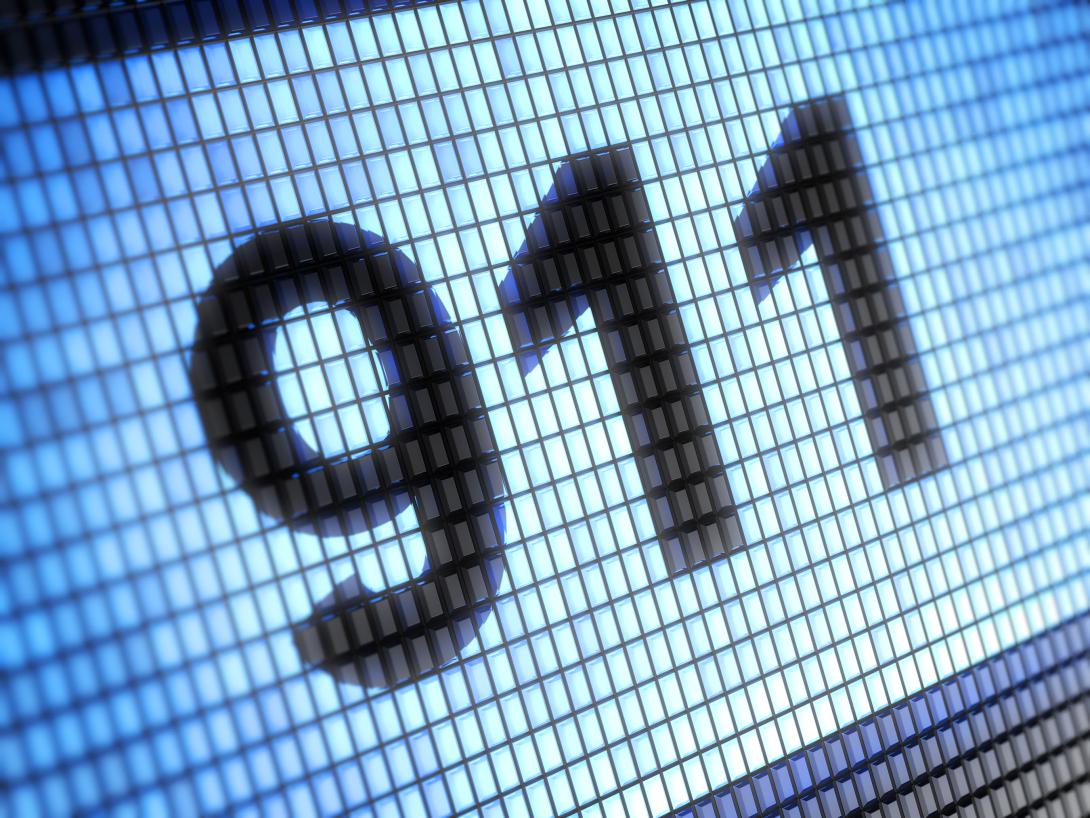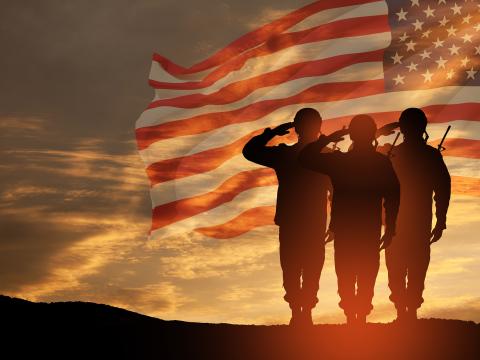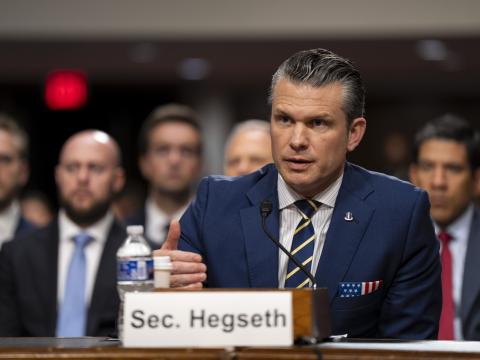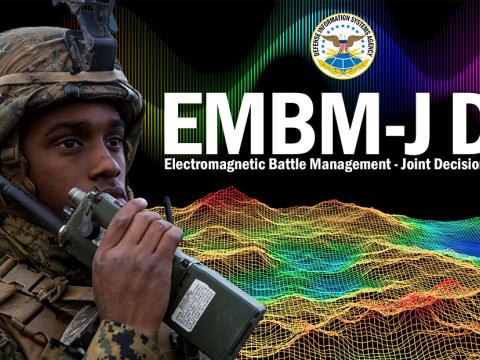Taking 911 Services to the Next Level
Residents throughout the United States and Canada rely on 911 services in the case of an emergency. Just as digital progress has changed people’s lives over the past 30 years, it is time for 911 to undergo its own digital transformation.
This revolution will have profound positive effects on the ability of first responders to help callers. The effects could be most beneficial for military bases within the United States.
Two Parallel Emergency Numbers Create Confusion, Miscommunication
In September 2013, a mass shooter killed 12 people and wounded three others in a building at the Navy Yard in Washington, D.C. Emergency responders from numerous federal and city agencies responded to the scene, but they were hampered by callers using two different emergency numbers—the 911 system that contacted the Washington Metropolitan Police Department (MPD) emergency call center, and an internal, four-digit number that contacted an internal, base-only response center.
In its after-action report, MPD observed that “[t]he Navy Yard’s independent emergency call centers resulted in several emergency calls, which may have contained vital or helpful information, not being relayed to city dispatchers at OUC and responding MPD officers. At the very least, this process created the potential for a significant gap in communications and situational awareness” between responders from city agencies and Naval District Washington responders.
“While a base phone is going to go to the base’s 911 center, a cellphone is going to go to an outside tower, because they don’t route the call the same way,” said Brian Anderson, Avaya’s director of Public Safety Solutions. “If the base isn’t notified by the outside emergency call center, there’s a lag time of 5 to 8 minutes” for the information to be shared from the city or county 911 center to the base response personnel.
Then, in December 2013, Kari Rene Hunt Dunn took her children to a motel to meet with her estranged husband. He stabbed her to death in front of the children, while one of their daughters tried four times to call 911—but the call wouldn’t go through because she didn’t know she needed to dial another digit to get an outside line. The murdered woman’s father mounted a campaign to require hotels and motels to route 911 calls to emergency call centers without first accessing an outside line. Kari’s Law was passed in early 2018.
Congress also passed RAY BAUM’S Act of 2018, an acronym spelling out the name of a late congressman who had championed the policy that all 911 calls, regardless of the communications platform used, provide dispatchable location information. The Federal Communications Commission issued regulations that implemented both Kari’s Law and RAY BAUM’S Act, effective as of early 2020.
These are just a few examples of current shortcomings in the nation’s existing 911 system, issues that can particularly affect U.S.-based military personnel. Most bases have older, disparate systems that were never really designed to provide location information, including IP networks that were not designed to represent geographic information.
Moving to NG911 Is Essential
Many may be aware of “enhanced 911” (E911) that went into effect around 2000 and is focused on providing caller ID and location information. While it represented a major step forward for emergency response, technology has continued to advance over the past 20 years, especially as American society has come to rely upon mobile communications.
“The cellphone is the biggest game changer in terms of public safety. It’s the greatest tracking device ever created,” Anderson said. “Location capabilities greatly increase, [showing a caller’s position] within 1 meter outdoors and 3 meters indoors.”
In addition to the advanced Global Positioning System (GPS) information, today’s cellphones provide text and video capabilities unheard of when E911 was put in place.
To maximize cellphones’ potential to provide useful, even critical, information in an emergency, the next step is to implement Next Generation 911, or NG911 for short, which is capable of accepting text and video in real time. Not only will responders be able to find callers in distress more quickly, video can give them advance notice of the need for specialized equipment, for instance, or whether physical obstacles—flooding, downed trees, or electrical outages, for instance—might make it more difficult to reach victims.
DoD’s Plans for NG911
As cellphones have become ubiquitous, military services often have set limits on service members’ being able to carry them everywhere, citing security concerns. But this approach has constrained users’ ability to contact emergency services when needed.
In June, the offices of the chief information officer and the undersecretary for Acquisition and Sustainment issued DoD Directive 8422.01E, “DoD Public Safety Communications Capability,” which directed the service secretaries and the commandant of the U.S. Coast Guard to “plan for future requirements related to wired and wireless … NG911 solutions supporting [Public Safety] that impact military installations.”
The directive specifies that the service branches provide sufficient financial and personnel resources to implement and sustain the initiative, and that the public safety communications functions create a plan to upgrade all DoD facilities to NG911 by upgrading the technology used by their public safety answering points (PSAPs, or military emergency call centers).
Avaya addresses the coordination of civilian and military emergency call centers by using geofencing—the virtual perimeter of a geographic area, Anderson said. “We put a geofence around the base property with one of our suppliers. Whenever someone launches a 911 call, the geofence notifies the base.”
There are numerous other benefits to a full implementation of NG911. The ability to send pictures and video means the possibility of providing a photo in real time of an active shooter, for instance, giving base personnel vital information to prepare—how many weapons, how much ammunition, the nature of the weapons, whether the shooter has body armor, to name just a few.
Just as important, PSAPs have the ability to provide a wide range of critical information to the person with the emergency, if they called on a cellphone, and to others who need to be alerted. For instance, when there was a rash of bomb threats earlier this year directed at historically black colleges and universities, emergency operators sent shelter-in-place and stay-away warnings to students and faculty.
“It could be hazardous materials warnings, interactive floorplans showing the closest—or safest—exit from a building. Or I could show the location of automatic electric defibrillators if someone is having a heart attack,” Anderson said. “It could be sending emergency utility cutoff requests—you don’t want to dump water on a fire if the electricity is still on.”
With these and other capabilities, NG911 becomes more of an emergency management platform, rather than a single point of contact between a caller and a responder, Anderson said.
There may be regulations governing the use of cellphones on military bases but they really can’t be controlled, Anderson noted. “They’re going to be there, so you might as well take advantage of those capabilities.”
The logistics of implementing NG911 on military bases is complicated, though fairly straightforward, Anderson said. “Migrating to NG911 starts to use cloud technology, where typically telephony functions have been on premises,” he explained. “The biggest preparation is getting information for where all the existing telephones are installed. And it’s the longest part of deploying it—the data gathering, where the devices are, where the networks are, who needs to be notified, where they’re located by time of day and day of week.”
Conclusion: Best Practices and Leadership Support
There are some best practices that Avaya uses, some of which might not be obvious. For instance, when setting up the networks, there should be a certain number of IP subnets per floor per building. When an emergency call comes in to the PSAP, the main desk should be notified, but notifications should also go to administrative staff.
“They don’t necessarily respond to the emergency, but they have to put together the after-action report,” Anderson explained. “The information even could be used for insurance purposes. If someone is using a base athletic field on the weekend and is injured, the NG911 alert lets the staff know so they can address it promptly.”
The biggest challenge to deployment of NG911 is a lack of knowledge of the requirement, Anderson said.
“One of the biggest problems is education. Military leaders need to be educated, and they need to be willing to ask, ‘What if?’ There are so many things the technology can do today that people don’t even know to ask about,” Anderson said. “This is not simply a military function. It’s public safety. Having interoperability between bases and the communities around them improves public safety for everyone.”
For more information, visit https://www.avaya.com/NG911 or contact Brian Anderson at branderson@avaya.com





Comments